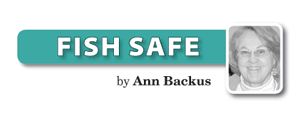When we reflect back on the past year in the region’s commercial fishing industry, we first remember those whom we lost.
It was a difficult year.
There are eight families and numerous friends who lost fishermen from our area in 2019. These folks have endured difficult changes in their lives and have had to make sacrifices well beyond the sudden loss of a family member or friend.
Our thoughts go out to them.
A year ago, on Jan. 1, 2019, the fishing vessel Mistress in the multispecies fishery sank southeast of Block Island. Of the three fishermen on board, one was rescued from a liferaft. The other two fishermen were not found.
Last October, one fisherman aboard a vessel with a crew of four fell overboard, was recovered, and given CPR, but could not be revived. This crew was lobstering southeast of Montauk, NY.
In November, the scalloper Leonardo, also with a crew of four and fishing southeast of Montauk, sank. One fisherman was recovered by the Coast Guard from a liferaft; the other three crew perished.
These five deaths were all directly fishing related.
Two additional deaths, one last February off Cape Ann, MA and one off Nantucket in April, were also reported.
One was attributed to a possible drug overdose and the second listed as “unresponsive.” These are considered to be not fishing related.
In comparison, looking at the previous year, in 2018 of eight deaths reported, four were fishing related and four not fishing related.
Of the four fishing related deaths, two were lobstermen caught in gear, and two were clammers who drowned. All the 2018 deaths were in Maine waters.
The rescues and assists provided to vessels under the headings “medevac” (crew member actually evacuated to land-based emergency services) and “medico” (vessel returns to port after consultation with USCG), are labelled as fishing related, health related, or drug related.
Fig. 1: Medevac and medico casualties in USCG District 1 for 2019.
| Medevac | Medico | |
| Fishing related | 8 (35%) | 4 (31%) |
| Allegedly drug related | 2 (9%) | 1 (8%) |
| Health related | 13 (56%) | 8 (62%) |
| TOTAL for 2019 | 23 | 13 |
In the 2019 tally, the medevac and medico numbers track quite closely with each other.
Approximately a third of the calls were fishing related, slightly less than 10% possibly related to drug use, and between 55% and 62% categorized as health related.
The fishing related medevacs included crushed fingers and hand injuries, a cut wrist, cut arm, injured leg with clots, two fishermen struck in the face, and one whose hand became caught in a grinder.
The health related medevacs included cardiovascular events, seizures, abdominal pain, and several mental health problems.
The medico cases are much less serious.
Crew members who can return to port are not considered seriously sick or injured.
The cases in 2019 included a dislocated shoulder, a crew member struck by a parting cable, a seizure following a fall, and a crew member stuck by a stingray barb.
The health cases are similar to those in the medevac list, but less serious: cardiovascular, abdominal pain, and seizures.
What can we learn from the 2019 casualties?
Looking at the fishing deaths, in two of the three fishing related casualties, one crew member was rescued from each of two liferafts, while the others who were not in the rafts perished.
The surviving crew members could probably tell us why they made it into the rafts and others did not. But I do not have that part of the story.
It is likely, however, that if all had been wearing either survival suits or personal flotation devices, their chances of survival would have been higher than they were.
These deaths also remind us how important it is that liferafts are well-maintained, properly installed — and we mean with the hydrostatic release properly affixed — and that the crew members know how to deploy them quickly without having to read the print on the casing.
The fifth death, a man overboard, was also a case of no personal flotation device.
This is not to assign blame — only to underscore that all of these deaths could possibly have been prevented.
In terms of the medevac and medico casualties, of the 36 total casualties, three were listed as drug related.
Admittedly this number does approach 10% of the cases, and it may represent an undercount if the captains are carrying and administering Narcan on board when a crew member overdoses.
It may be of interest to captains to know that the Massachusetts Fishing Partnership Support Services now includes Narcan training in their commercial fishing safety trainings, which are offered from Massachusetts to Maine with some frequency.
The next best thing to adopting a zero tolerance policy for drugs would be to have Narcan available on board in the event of overdose.
Ann Backus, MS, is the director of outreach for the Harvard School of Public Health’s Department of Environmental Health in Boston, MA. She may be reached by phone at (617) 432-3327 or by e-mail at <abackus@hsph.harvard.edu>.
FISH SAFE
• Adopt a “prevention” mindset: Insist on the use of personal flotation devices, and keep your survival equipment in order.
• Take steps to reduce deck hazards and teach safe handling procedures to your crew.
• Be prepared to undertake an intervention: Get Narcan training and carry Narcan to prevent death or serious injury from drug overdose.






